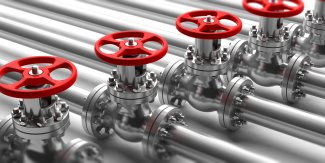Valves

Price
Add to Cart
Valves
Valves are used to stop or control the flow of fluids in piping. The major categories of valve are:
- Block Valves. These are on-off devices that are used to either stop the flow of fluid through a pipe. They are not generally used to control the flow rate.
- Control Valves control the rate of flow of the fluid. They are not normally used for throttling or to ensure a tight shut off. Control valves usually have block valves on either side so that the flow can be completely stopped and the control valve removed for maintenance.
- Relief Valves. These are valves that open in response to over-pressure in the equipment that they are protecting. Valves dedicated to ensuring safety should not be used for normal operations. (As discussed later in this chapter, some relief valves are used as part of routine operations. In such situations the valves are not pressure safety relief valves.)
The following issues safety issues should be considered when designing and operating valves.
- Closed valves should not have liquid trapped inside their bodies. The liquid could expand during a fire leading to overpressure and rupture of the valve body. Standard gate valves are normally not a problem in this regard because excessive pressure is usually relieved by minor leakage past the valve seat. However, valves such as the “double-block and bleed” type will trap liquid. When these valves are used in liquid service relief valves or plugs should be installed on the body of the valve.
- Steel plugs or blind flanges should be installed on all open ended valves that are not in use. Then, if the valve leaks, there will be no release of toxic or flammable materials to the atmosphere.
- High-performance butterfly valves and gate valves are recommended for use as block valves in firewater distribution systems. They should provide tight shutoff and use sealing materials that do not swell or deteriorate with age.
Table of Contents
Introduction
Regulations and Standards
Valve Symbols
Block Valves
Gate Valves
Ball Valves
Butterfly Valves
Plug Valves
Needle Valves
Excess Flow Valves
Self-Closing Valves
Globe / Control Valves
Check (Non-Return) Valves
Rotary Valves
Flangeless Valves
Emergency Isolation Valves
Valve Seat Materials
Valve Position
Steam Traps
Pressure Relief Devices
Causes of Overpressure
Pressure Safety Relief Valves
Pilot-Operated Pressure Relief Valves
Block Valves
Thermal Relief Valves
Rupture Disks
Below Relief Valves
Setting the Pressure
Hatches / Doors
Copyright © Ian Sutton. 2024. All Rights Reserved.
